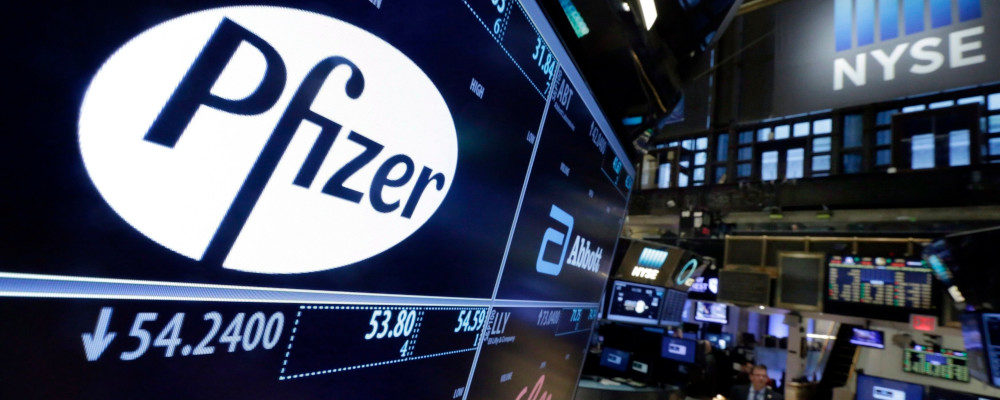The rapid creation of effective vaccines that mitigate the effects of COVID-19 has been a triumph for drug companies. Vaccine development would not have been possible without the infrastructure, production capacity, and distribution channels that are an integral part of Big Pharma (the name for large publicly traded drug companies). Should we view their pandemic actions as heroic or simply another example of aggressive profiteering?
Why are Big Pharma companies mistrusted?
Pharmaceutical companies are generally mistrusted as having predatory profit, rather than patient-centered, motives. They rank just above the tobacco and oil and gas industries in their low levels of public trust. This reputation stems from their high profit margins, massive product liability payouts to harmed patients, and regulatory penalties for fraud and misrepresentation of drug benefits. Large fines have been paid by most Big Pharma companies to settle claims of criminal acts, deceptive marketing, illegal promotion of off-label unapproved uses, kickbacks to prescribers, and failure to report safety data. As an example, in 2012 Glaxo Smith Kline paid $956.8 million as a criminal fine, $43.1 million in forfeiture, and $2 billion to resolve civil liabilities under the U.S. False Claims Act. Total penalties paid by American Big Pharma companies since 2000 exceed $83 billion.
The most egregious recent settlement was by Purdue Pharma for $8.3 billion. This was due to its major role in fuelling the opioid epidemic by its prolonged, deceptive, and unsafe promotion of OxyContin, thus fostering addiction and overdose deaths.
For many companies pushing the ethical boundary, egregious conduct and misrepresentation is simply the cost of doing business with fines covered by their enormous profits, which are estimated to exceed $600 billion worldwide in 2021.
Drug promotion and direct to consumer advertising
Direct to consumer (DTC) marketing of prescription drugs play a growing role in product promotion. The U.S. is one of the few countries that allow it. Canada does not; however, we are exposed to it because of ads on American TV stations that are freely seen in Canada. Most television shows now have multiple drug promotion commercials suggesting you talk to your physician about the use of their new and expensive anticoagulant, arthritis drug, psoriasis treatment, irritable bowel syndrome treatment, memory enhancer, or targeted chemotherapy.
The U.S. Government Accountability Office (GAO) recently reviewed the nature of DTC advertising and its effects on Medicare beneficiary drug spending. In the three-year span between 2016 and 2018, DTC industry advertising spending was over $18 billion, with Medicare pharmaceutical drug spending $560 billion. Half the advertising spending was for three classes of drugs for chronic diseases, namely arthritis, diabetes, and depression. The advertised drugs represented only about 8 percent of drugs used, but 57 percent of Medicare drug costs. Advertising is geared to more recently released high-cost drugs in an attempt to convince patients to request that their physician preferentially prescribe them.
While DTC advertising has some benefits in informing patients about new and beneficial therapies, it is also associated with the potential for overuse of more expensive drugs and rejection of less expensive yet often sufficient therapy. Advertisers, when directly describing an approved drug benefit, must also describe its many potential side effects. When hearing that you may be seriously harmed by the drug, the commercial usually focuses on happy people doing fun things that distracts you from the negative worrisome message. Indeed studies suggest that the listing of the many side effects may even be falsely reassuring since there is an expectation, not always correct, that your prescribing physician is fully aware of these concerns and will diligently avoid giving you the drug if you are at risk. Drug cost is never discussed no matter how expensive it is.
Why are drug costs so high?
The traditional answer is that few compounds ever make it to the marketplace, research and development and clinical trial costs are high, and the profit motive fosters invention. However many drugs produced are simply very similar to existing drugs that have little added benefit, with large sums of money spent on promotion and marketing—spending that doesn’t advance science or patient benefit.
Another reason for growing costs is that small companies with a potentially useful drug may receive investments from hedge funds with the greedy expectation of enormous profits. The goal is to sell the company to a Big Pharma group that wants to buy a potentially important new drug that likely will be successful soon, rather than laboriously having to develop their own pipeline. The very high cost of sale to a Big Pharma company ensures a very high multiple of return on investment, which necessitates a very high drug cost price to the consumer.
I am concerned about a recent example in my field where a company with a useful new drug was bought for $13 billion, a highly excessive price. Because they produce an “orphan drug” that is a drug with low use, they are able to charge an exorbitant amount of money since the market is relatively small. The cost will likely be $50,000 per year for life rather than a more reasonable $5,000 had the selling price for the developing company not been unreasonably inflated. As well, while investigators who manage clinical trials need to disclose grants and other funding that may create a conflict of interest, the amount and value of stocks or options allocated to the researchers are often not clearly or fully disclosed.
Canadian trends
While the highest drug costs are in the U.S. the impact of rising costs for existing and new drugs is a growing problem worldwide. The Canadian Institute for Health Information estimated that in 2021 Canadian health care cost $308 billion, or about $8,000 per capita.1“Total health spending in Canada is expected to reach $308 billion in 2021, or $8,019 per Canadian. It is anticipated that health spending will represent 12.7% of Canada’s gross domestic product (GDP).”https://www.cihi.ca/en/health-spending#:~:text=Total%20health%20spending%20in%20Canada,report%20National%20Health%20Expenditure%20Trends. Drug costs made up about 13.9 percent of the total cost and more so since it didn’t include drug costs by hospitals. The public share of spending is just under 75 percent, with the balance split by out-of-pocket and insurance expenditure.
Increased drug cost pressure also comes from the unreasonable and extreme price rise of some inexpensive drugs purchased by companies with plans for predatory price increases. An example is the 500 percent price increase by Mylan in the U.S. for EpiPens used to treat acute life-threatening allergic reactions.2Mylan CEO defends EpiPen price hike to U.S. lawmakers https://www.ctvnews.ca/health/mylan-ceo-defends-epipen-price-hike-to-u-s-lawmakers-1.3083173#:~:text=The%20list%20price%20of%20EpiPens,Mylan%20in%20growing%20public%20outcry. Another driver of cost is the large number of biological drugs used for multiple conditions. While they are important and expensive to produce, they are heavily marketed and sold at very high cost and large profit margins.
Are drug companies profiteering from COVID-19 therapies?
Pfizer, one of the world’s largest Big Pharma companies had annual revenues of about $44 billion prior to COVID-19 vaccine sales. Julia Kollewe reported in the Guardian recently that their sales were boosted by $37 billion to $81.3 billion for 2021, due to the roughly three billion vaccine doses produced.3Pfizer accused of Covid profiteering as first-quarter sales hit $26bn https://www.theguardian.com/business/2022/may/03/pfizer-covid-sales-pricing-vaccine-paxlovid-pill
Their likeable CEO Albert Bourla wrote about the challenges of getting the vaccine produced and approved in record time in his book Moonshot.4The Story Behind Pfizer’s Covid-19 Vaccine – CEO Bourla’s ‘Moonshot’ https://www.forbes.com/sites/johnlamattina/2022/03/17/the-story-behind-pfizers-covid-19-vaccine–ceo-bourlas-moonshot/?sh=3a6acbb820e5 Very few companies had this capability. Another more effective vaccine is in the works that will provide more comprehensive protection. Their antiviral drug Paxlovid is expected to save many lives this year and beyond in higher-risk infected individuals. The drug is also expected to generate an additional $22 billion in sales, pushing annual revenues over $100 billion, an astonishing amount. Sales of vaccines to poorer countries were generally priced close to the production cost of $3-10 per shot and at about $25-30 for richer countries. Not a large individual cost to save millions of lives but at an incredible profit. Is this reaping the benefits of a remarkable moonshot in a free market or profiteering? It seemingly is both.
Moderna a much smaller company is also having a similar banner year. They just reported that vaccine sales in the first three months of 2022 alone brought in $5.9 billion in revenue and a quarterly profit of $3.7 billion.
Can Big Pharma do better?
While excessive regulation comes at a cost to innovation and discovery, there seems to be little hope that self-regulation and reigning in the drive for excessive profits will come from within. Governments need to place a profit cap on new drugs that puts limits on profiteering. Companies should also not be allowed to buy up inexpensive but highly useful drugs in order to raise prices by a large multiple of cost. Research funding from government agencies should be seen as a co-investment with an equity stake that will allow for a fair profit and affordable pricing. Direct to consumer advertising needs more FDA oversight in the U.S. and such commercials should be blocked from Canada where DTC advertising is illegal.
Research bias can be further reduced by not allowing scientists (and family members) carrying out clinical trials to own stock or hold an equity position in sponsoring companies. Journals need to more rigorously enquire about and enforce conflicts of interest.
Finally, companies that make such huge profits need to find their moral compass. They need to act ethically, carry out and report studies honestly, and financially support those in need with donations of both funds and products.
C.S. Lewis said that “Integrity is doing the right thing even when no one is watching”. For Big Pharma to act with greater integrity they also need to know the world is watching.




